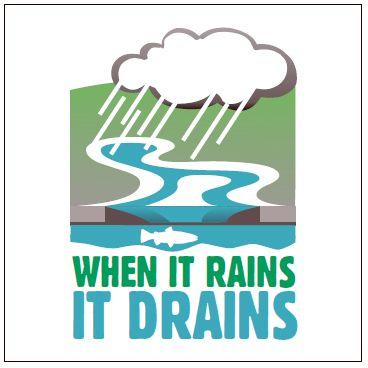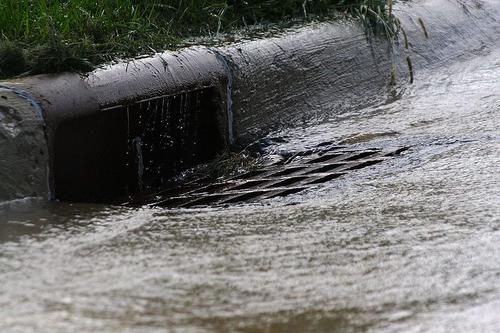Stormwater
In a community settlement stormwater is generated on house roofs, paved areas and roads during rainfall events. In addition, stormwater is generated in the catchment of a stream or river upstream of the community settlement. Therefore, the amount of stormwater is related to the amount of rainfall precipitation as well as the nature of the land's surface. Vegetated surfaces slow the rate of runoff to stormwater and allow rainfall to penetrate the soil whereas impervious surfaces do not and therefore produce more run-off. During a storm event, the peak flow of stormwater is higher and of a shorter duration with an impervious surface, while the peak flow is lower and of a longer duration with a vegetated surface. Stormwater run-off may contain as much solids as household wastewater depending on the debris and pollutants in the path of the stormwater run-off, although in general the pollutant load of stormwater is lower than that of wastewater.
Stormwater flows through the landscape’s natural drainage system. Piped stormwater collection was a development in European cities to overcome odor and improve aesthetic appearance of wastewater disposed with stormwater. The covering of ditches used for combined sewerage was an intermediate step in using natural drainage to construct sewerage for combined wastewater and stormwater. Piped sewerage also allows more land area for road and footpaths. With the separate collection of wastewater, there is an opportunity to return some stormwater flow path to its more natural state to improve urban amenity value.
(UNEP 2000)

